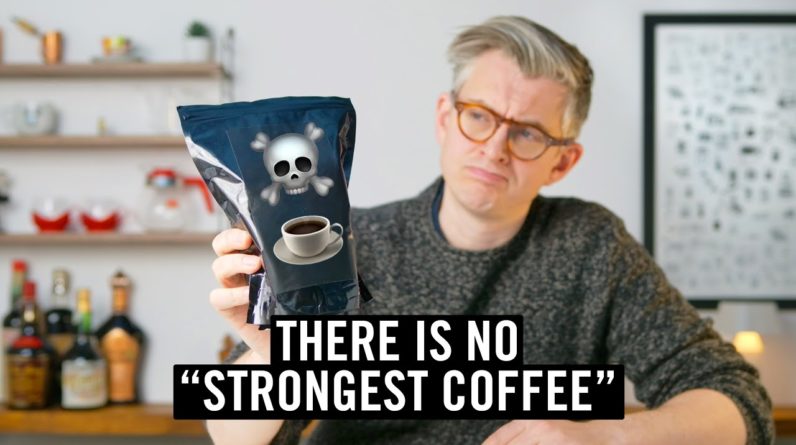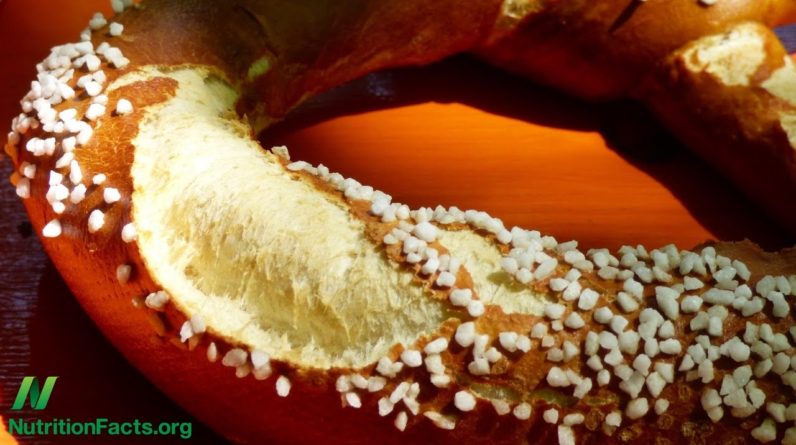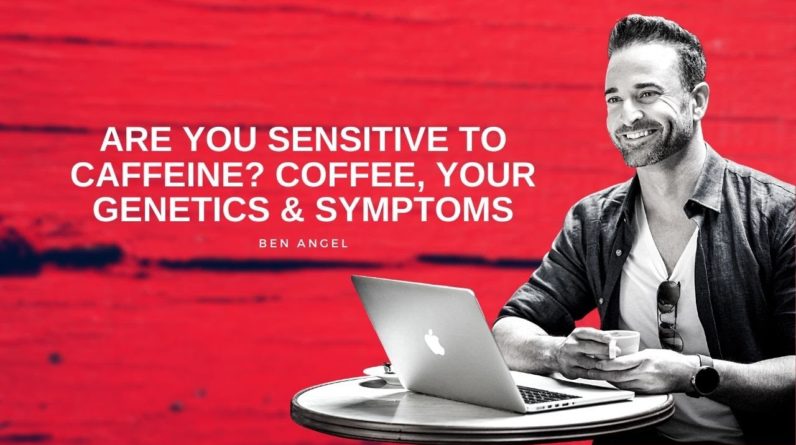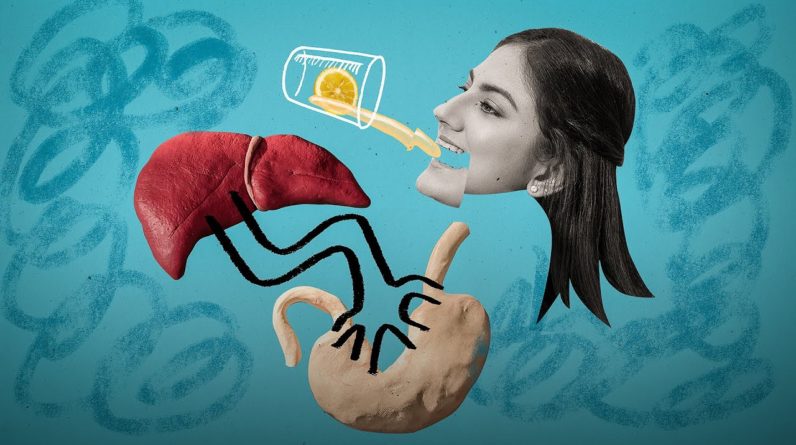
[Music] there is no strongest coffee in the world doesn't exist and that's probably a confusing thing for me to say because if you're interested in coffee you've probably been served an ad by a company offering you the strongest coffee in the world i'm here to say it's not and it doesn't exist and i should explain myself turns out we use the word strength in a really confusing way in fact we use it four different ways and i would argue only one of those is correct and so today we're going to go through each of the ways that we use the word strength understand it a little bit more learn from it a little bit more and at the end of it i think you'll understand how i can claim that there is no strongest coffee in the world now i have here a bag of coffee from one of the many brands claiming to sell the strongest coffee in the world i have pixelated and blurred it because having looked into it mostly they're very small companies often they don't even roast themselves and i'm not here to to be mean to someone else's business just because i sort of disagree with their marketing what's inside the bag though i think is a pretty good example of what you're typically being sold with these kind of coffees let's have a look this coffee is a pretty dark roasted robusta coffee that's the species robusta and what you'll tend to find is that robusta broadly speaking has about twice the caffeine content of arabica because the first way that we use the word strength is to talk about caffeine content the more caffeine it has the stronger it is and i cannot understand where they're going with that but caffeine's not as simple as you want it to be now caffeine is pretty water-soluble so you'd think however much is in the ground coffee should end up in the cup but confusingly it doesn't always seem to be that way you'll see loads of studies where they go out and buy drinks from different coffee shops and they report the caffeine contents in there and they're really variable in kind of a surprising way but broadly speaking the amount of caffeine in your cup of coffee will correlate to how much was in the beans to start with and then how effectively you've extracted it from there but you know only part of that really is intrinsic to the coffee itself and yes robusta has on average twice the caffeine content but it can be more it can be less very rarely do i see anyone reporting a kind of milligrams of caffeine per kilo or per gram of coffee on the bags i think most people are just saying oh it's robust it's twice the caffeine yes this is very strong i guess we should brew this up so we've got a cup of coffee with i suspect a good amount of caffeine in it but you know there's certainly ways to brew coffee where you might get more out i think longer steeps for example would probably be more effective something like a very long french press brew or like a super long aeropress brew if you're desperate for full access to caffeine but here's the thing you can buy caffeine in pill form if you're desperate for caffeine there are there are much gentler ways to consume it you can have the cup of coffee that you want and just take a a caffeine pill if that's your kind of requirement as for whether caffeine is a good idea or not well we made a video all about caffeine i'll leave it linked up here and in the description down below you can make up your own mind about how much caffeine you should be consuming now the second way that we use strength in this kind of scenario is one that you've seen on the front of a bag of coffee in fact we made a video about this as well about buying coffee and understanding what the labels mean often you'll see a strength rating on a bag of coffee and again that's kind of back to an intrinsic quality of the coffee and really what they're saying there is not strength they're giving you roast level so a strength five will be a very dark gross the strength two will be a very light roast it's nothing really to do with the word strength it's a completely inappropriate use of the word strength but it's a sort of nice way for sort of supermarkets and others to talk about roast level in a way that doesn't involve the complexities of trying to describe the color of a coffee bean now that shorthand on the outside of a bag really is shorthand for the third way that we use strength which is kind of intensity of bitterness let's go with that like you might sip a coffee that's incredibly bitter and say uh too strong i don't like it and that's a very sort of good word for communicating what you like or don't like but it's actually not quite the correct word the idea should be oh that's too bitter that's too harsh that tastes burnt that it's bad but too strong actually is talking about something else this coffee woof yeah is uh is a pretty dark roast of robusta which itself typically has higher levels of bitterness so this cup tastes very bitter but it would be incorrect of me to say this cup tastes very strong but all of this brings us to the sort of final usage of the word strength the one that i think is the correct usage the one that certainly we use here on this channel and i'm going to give you a sort of more in-depth explanation of why it's important to use that term strength and actually how it's really useful to understand it when it comes to better coffee brewing every day all of that will come after a short ad from this video sponsor which is squarespace if you need a website or a domain i would recommend squarespace they make it so easy it doesn't really matter what it is you want to make it could be a website for your cafe it could be a portfolio of your work it could be an e-commerce store it's all built right into squarespace you start with one of their beautiful templates and that means that it's going to look great on every device every browser and you begin to fill it with your words your images your ideas your products it could be anything and once it's up and it's live there's nothing really to take care of nothing to patch or upgrade or install it's gonna look beautiful from that point onwards as i always say don't take my word for it click the link down below and sign up for a free trial explore build create something and when you're ready to launch use coach james hoffman for 10 percent off any website or domain think of a squarespace for sponsoring this video so the true definition of strength in coffee the true meaning the true understanding really is trying to answer the question of how much of this cup is water and how much is dissolved ground coffee and and that tells me essentially how strong the cup is if you drink alcohol you'll be familiar with the idea of strength from an alcohol perspective on the side of a beer or a glass of wine or a bottle of whiskey you'll see a percentage of alcohol that tells you how strong it is how much of this shot of whiskey is ethanol might be 40 booze and you understand how strong that is if it's a glass of wine it might be 10 12 14 the percentage makes sense of the strength in a very neat easy way you can do exactly the same thing with a cup of coffee you can use a little device to calculate what percentage of this cup is dissolved ground coffee typically speaking a filtered coffee will be anywhere from one to one and a half percent strength as a kind of ballpark it will vary and as i said there's no right answer there but that's the kind of rough strength that you'll find in filter coffee espresso is more like 8 to 12 somewhere there so nothing really gets past wine levels of strength now the the way we calculate strength these days is to use a refractometer these are devices that you put a sample of coffee onto the little readout here and you push a button and it calculates the refractive index now any liquid will have a refractive index it's essentially the speed of light through that liquid but being overly simplistic probably doesn't help then a coffee focus refractometer will take the refractive index do a little bit of mathematics a little bit of algorithmic work and spit out a percentage strength of coffee you can't measure coffee's strength with a typical refractometer that isn't built for coffee because it doesn't do the algorithmic conversion to a percentage strength specific for the beverage there's a couple of these on the market the pioneering model was from vst which is this one here a guy called vince verdeli did it fundamentally changed the coffee brewing game forever by allowing us to understand how strong a cup of coffee was in in a really accurate way why is that important that's a very good question because on its own strength isn't actually particularly useful i could measure the strength of this cup of coffee and i could taste it and i could say oh it tastes bad and the strength is this therefore that strength is bad but but that's not the way it works and in fact if i dilute this down the quality of this cup of coffee is the same the flavors that it has are the same but it is now a weaker cup so strength on its own is actually not that important what it is though is a point of preference how strong you like your coffee is down to you there's no right answer in the world of strength once you work out what strength you like you can kind of work out how much coffee you should use to get to that strength but if you know how much of this cup is coffee essentially or dissolved coffee and you know how big the cup of coffee is or what the mass of the coffee is then as long as you know how much coffee you started with you can calculate extraction now that seems immediately a little bit confusing so i'll go with a different sort of practical example i pulled two double shots of espresso i dosed 20 grams in each time and i pulled about 40 grams out each time in the end i had about 80 grams of liquid that went into a dehydrator and then the two spent pucks that started as being 20 grams each they went into a dehydrator and this is kind of how it used to work though they really only used to focus on the spent pucks of coffee and not so much the liquid let's see what we get at the end of that so i've got i've got two pucks these would have weighed 40 grams in total to start with uh obviously when you freshly brewed them they've got quite a lot of water inside them so you can't really tell how much coffee you got out but if we weigh them now stack them up they now weigh 32.4 grams so you can say if i started with 40 grams and i got 32.4 grams then i i took out 7.6 grams in terms of my extraction those that's how much dissolved coffee was taken from this puck and put into the cup that would be consumed if you divide 7.6 by 40 or you turn it into a percentage you've got 19 so you would say that i've extracted 19 of the ground coffee now historically there were guidelines on the desired level of extraction it was said to be sort of 18 to 22 percent was the the good range for coffee brewing what we found more recently is that we've been able to take that number higher and higher and higher using different techniques different grinders a whole bunch of other stuff without it tasting bad but in many scenarios 18 to 22 percent is a good starting point in this whole thing so on a kind of technical level these were good brews not incredible not bad but kind of fine this is what we extracted and what we've made here is possibly the world's worst instant coffee this is kind of what instant coffee is except you don't dehydrate it in a hot environment instant coffee is freeze-dried to concentrate it as a result you end up with a much nicer looking end product that doesn't taste nearly as bad this has just been cooked to dry and would be completely disgusting it's sort of um i'll see if i can oh yeah but all of this here is is this basically yeah it's basically instant coffee don't don't drink this i presume it would taste completely terrible you would assume this would taste terrible i mean it should it will taste terrible i'm gonna have to taste it aren't i i don't know whether to turn it into a cup of coffee or just to eat it this has been cooked for two days this was an espresso cooked for two days dried out oh no it's disgusting but it also really tastes like marmite or vegemite like it like it really very savory just oh there it goes okay why am i doing this this is not the point of this video look kids if you make your own instant coffee use a freeze dryer don't um don't dehydrate it in a small dehydrator that's disgusting i'll wrap up as i recover from that why is this important well very simply i use the term strength quite a lot i'll talk about strength the impact of different grinders or brew methods on strength and then extraction too and i did think it was time to make a video discussing that and explaining that in a little bit more detail explaining refractometers explaining the kind of mechanics of extraction in a way by using strength in a whole host of different ways i think it's actually really confusing and frustrating if i took let's say a light roast of a decaf coffee and i brewed it at a really high ratio so or i pulled a shot of it right that would be low strength because it's a light roast according to the kind of strength rating it'll be low strength because it's decaf it's got no caffeine in it it would be low strength because it probably wouldn't taste particularly bitter as an espresso but it would probably be about 10 strength as a beverage which means it would be really strong so it's strong but it's not and that to me just is ridiculous it's unhelpful it's confusing and i wanted to create a little bit of clarity uh and try and use the words appropriately in future videos and just help you understand the world of coffee a little bit more but now i want to hear from you which aspect of strength doesn't make sense still are you frustrated by the fact that people use strength in all of these different weird ways have you tried something claiming to be the strongest coffee in the world did you eat it raw as whole beans because that's really the only way to have it be truly the strongest possible cup anyway let me know down in the comments below but for now i'll say thank you so much for watching and i hope you have a great day








